Everything you need to know about the EZ30D and EZ30R
It goes by many names, most commonly the Subaru H6, EZ30, EZ30D or EZ30R. Of course, we’re talking about 3-litre 6-cylinder Subaru engine manufactured between 1999 and 2009. We’re mostly interested in the more advanced, second generation of this engine produced after 2003, however, will touch on the original variant.
This article aims to explain the good, the bad and the ugly about these under-rated Subaru motors, as well as giving you all the information you need to know about extracting more power from one.
Origin
Let’s start with a little history lesson. The early EZ30D began production in 1999 and was found in the Subaru Legacy (Subaru Liberty in Australia) and Subaru Outback. This was a fine engine for daily motoring, however with average performance and only available with a 4-speed automatic, it was far from exciting.
In 2003 Subaru released a new EZ30D, a completely revised package that was turned up a notch in terms of performance and efficiency. Again, this engine was available in the Subaru Legacy and Outback as well as early variations of the all-new Tribeca. For the first time, the Subaru Legacy could be optioned with a 6-speed manual transmission, which allows the performance of the flat-6 motor to shine. This engine has been dubbed the EZ30’R’ by enthusiasts, however, Subaru’s official engine code was still EZ30D, as with the first generation.
Basics
Let’s look at some aspects and differences between the variations:
All EZ30 engines
- 6 Cylinder, 2999cc boxer engine
- 4-valve, quad camshaft aluminium cylinder heads
- Open-deck aluminium cylinder block
- Bore: 89.2mm
- Stroke: 80mm
- Rod Length: 131.5mm
- 10.7: Compression ratio
- Dual timing chain system
- Coil on plug-ignition system
- EZ30D model code as designated by Subaru
Early EZ30D
- Cast aluminium intake manifold with variable-length design
- Cable actuated throttle body 76mm OD
- Single exhaust-port cylinder head design
Late EZ30D (AKA EZ30R)
- Plastic intake manifold
- Drive-by wire electronic throttle body 76mm OD
- 3 exhaust-port cylinder head design
- Variable lift and variable timing intake camshaft (ALVS and AVCS) much like Honda’s iVtec system.
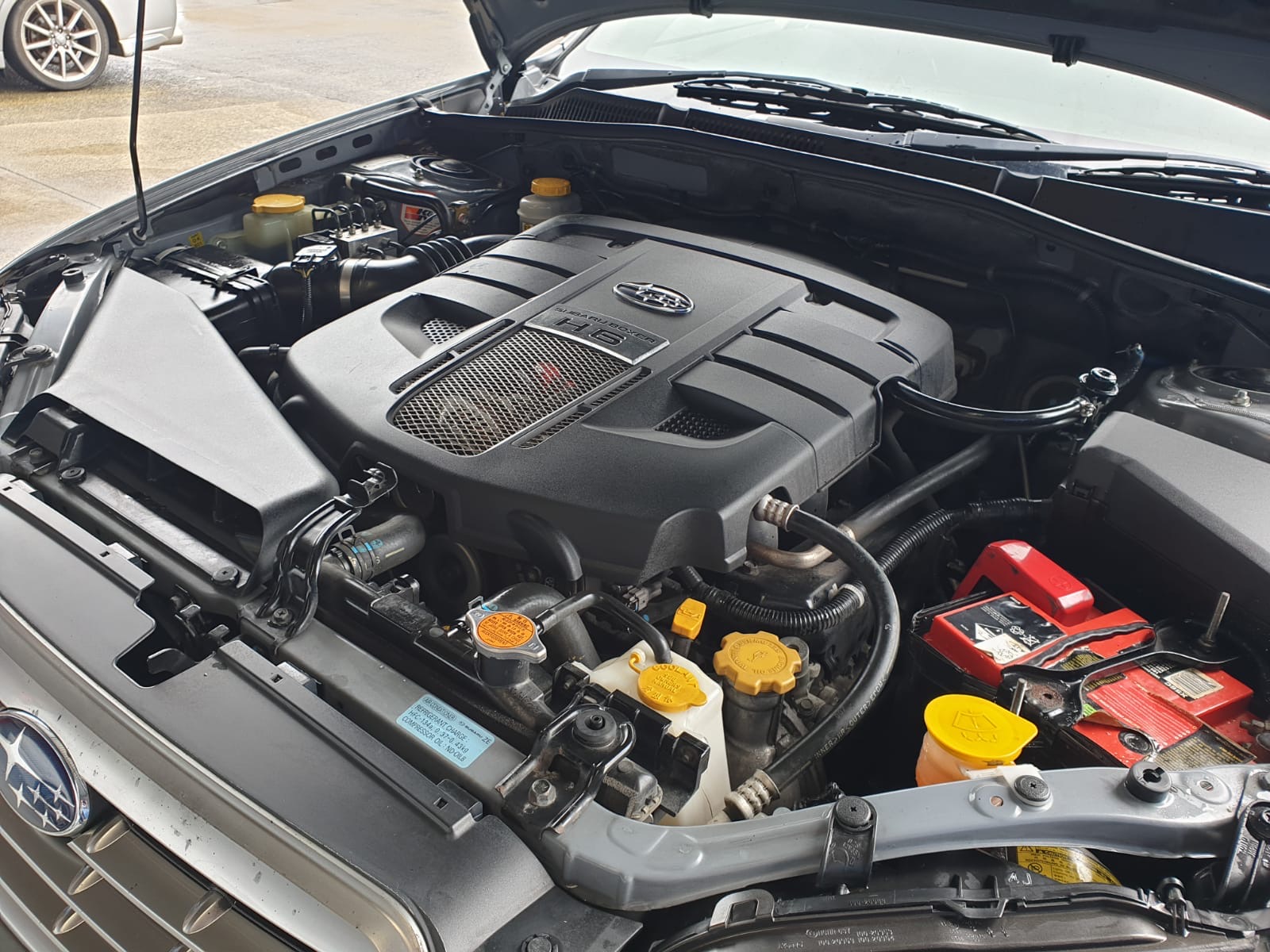
EZ30R
The rest of this article is going to focus on the newer EZ30D (AKA EZ30R) as that’s generally the preferred platform for modification, however many points apply to the earlier variation.
EZ30R Strengths
- Big displacement - One of the main reasons to use an EZ30 over an EJ or FA series engine is the larger displacement, meaning more power and torque can be produced with more ease.
- Intake ports - these have a great high-flowing design and resemble the big power capable Evo X 4B11 intake port.
- Variable valve timing and lift - this is a pretty advanced system that can be used to create a wide power band and good drivability.
- Individual exhaust ports - there’s no question, the exhaust ports are much improved over the early generation of this engine and part of the reason they produce more power in stock form.
- Engine weight and size - Despite the added cylinders, the engine isn’t actually much bigger than the EJ series thanks to the slim timing chain system. Similarly, the additional two cylinders doesn’t increase the weight far beyond that of a 4-cylinder Subaru engine thanks to the lack of a turbo and up-pipe.
- Decent compression ratio - at 10.7:1 the compression ratio is high enough to provide plenty of pep in naturally aspirated form, however low enough that it can handle a mild-boost setup with the addition of a turbo or supercharger.
- Sound - it’s pretty hard to beat the sound of a flat-six engine singing through the rev-range, goodbye Subaru rumble, hello Porsche soundtrack.
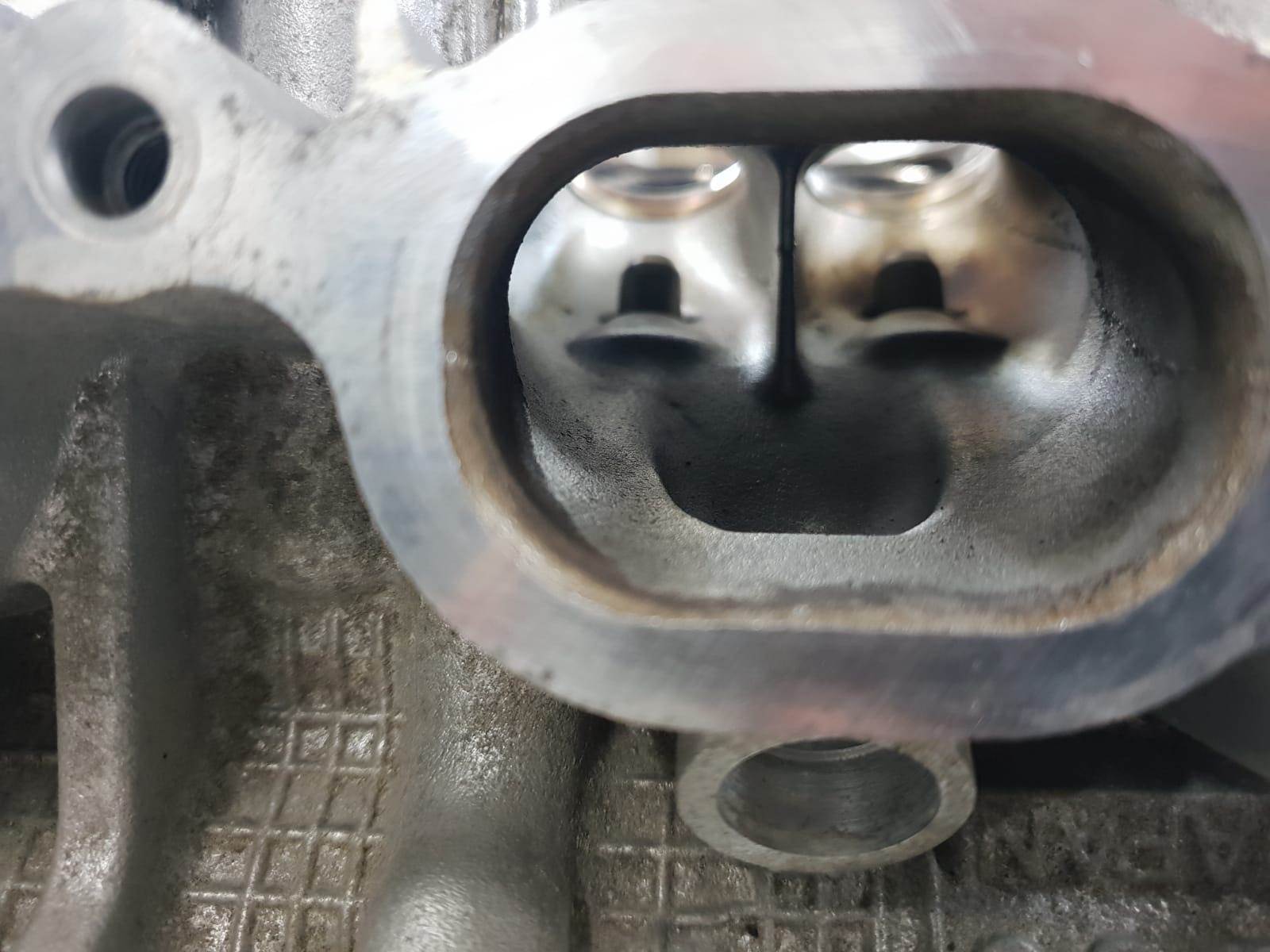
EZ30R Weaknesses
- Drive belt idler pulleys - The stock pulley bearings are prone to seizure which causes expensive damage to the air-conditioning pump bracket. We recommend replacing the pulley bearings immediately if you haven’t already.
- Open deck design - The EZ30 block features on open deck design, meaning the cylinder isn’t supported by the block around the top of the deck. As cylinder pressures increase with higher power levels, the cylinder will then flex and go out-of-round which can lead to head gasket failure, poor piston-cylinder sealing and damaged cylinder walls. To combat this problem, we have developed the PBMS Closed-deck modification.
- Liner thickness - Exacerbating the weakness of the open deck design are the thin cylinder liners, which measure a mere 2mm. Whilst these are generally fine in naturally aspirated and low-medium boost applications, they risk warping or splitting if pushed, particularly if the open deck block is retained. In extreme-power applications, we recommend replacing the factory liners with [@Darton Sleeves]. Consideration should also be made to avoid the use of oversized pistons if retaining the factory liners, as these will require the already-thin liners to be machined even thinner.
- Engine weight and size - As described in the advantages, there isn’t a massive weight or size difference between a conventional Subaru 4 cylinder and the EZ30. With this said, however, there is still some weight and size increase to the larger displacement engine. The major difference here is that engine is slightly longer (approx. 3 inches) which adds to the weight bias imbalance forward of the front wheels. For a street vehicle, this may not be an issue however it will be noticed on the circuit. A turbo or supercharger will again increase the weight of this package and add further to the weight over the front wheels which will have a negative effect on handling.
- Cooling - The larger displacement of these engines generates more heat than their smaller 4-cylinder counterparts, combined with the reduced space for the cooling system work effectively. Special attention and quality parts should be used when designing the cooling system in an engine-conversion or performance application. Fitment of an aftermarket oil cooler can be a vital addition to keep temperatures in check.
- Exhaust ports - Whilst the exhaust ports are greatly improved over the early single-exhaust-port EZ30, they are still a small and restrictive port when compared to other performance orientated engines. The ports can be improved with a port and polish, however, the tight design does increase the time and cost to do this effectively.
- Timing chain tensioner - Even on factory vehicles, the timing chain tensioners are known to cause problems leading to engine failure. This issue is all the more important to solve on high-power engine, thus we have produced a PBMS improved EZ30 timing chain tensioner.
- Water pump - Access to this requires the removal of the front timing cover, which is a large job.
- Oil leaks - Age is starting to get the better of these engines, which often leak oil from the front cover. Like the water pump, removal and refitting of this is a large job.
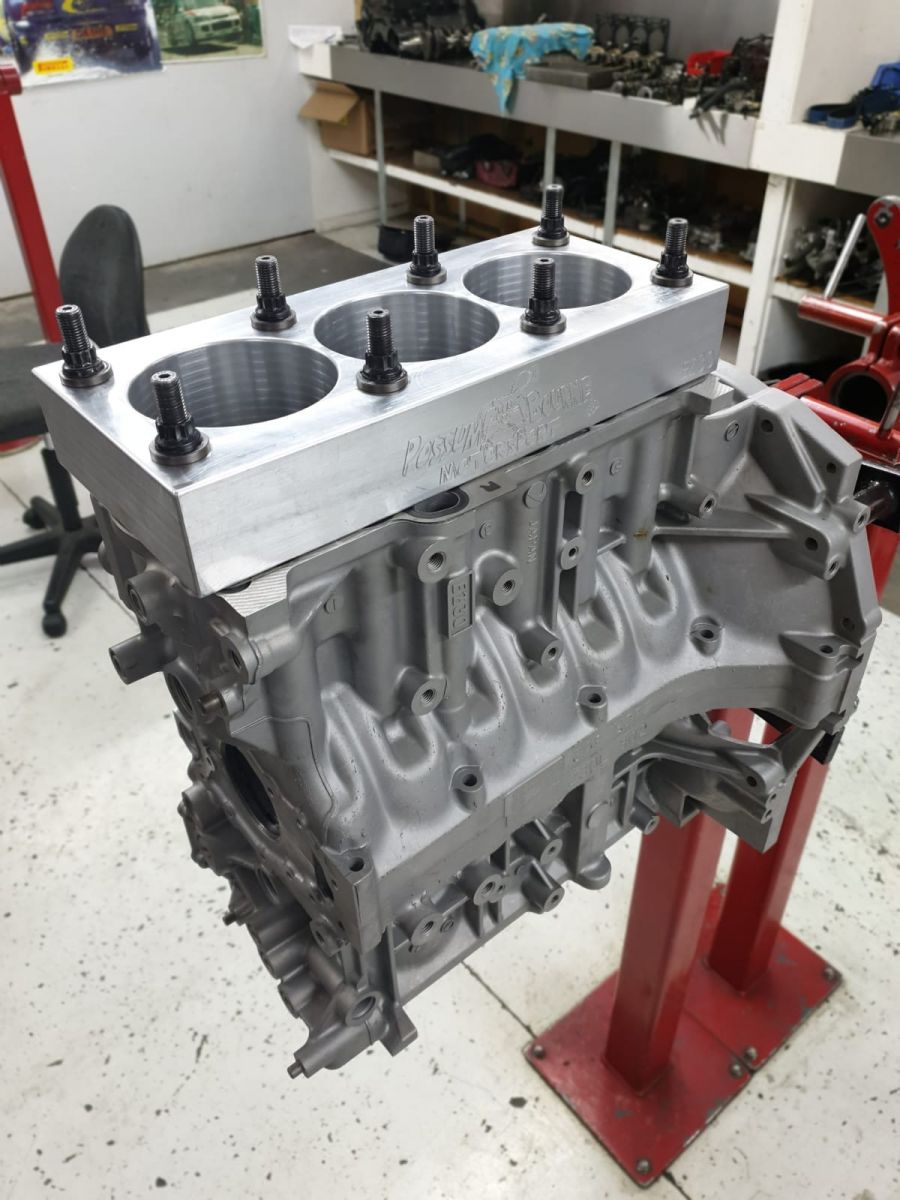
Modifying your EZ30R
Everyone wants more power! The targeted power level, the purpose of the vehicle and ultimate budget will dictate whether you improve the EZ30R in its naturally aspirated guise, or look to add boost to step up the power level with a turbo or supercharger.
Naturally Aspirated
Like most stock engines, the EZ30R will benefit from flow improvement of the intake and exhaust systems and tuning. A serious power increase requiring a high-compression engine build. As with most naturally aspirated vehicles, the power gains made aren’t as significant when compared with a factory turbo-charged engine. It generally makes more economic sense to add a turbo or supercharger if you want a significant jump in power.
It must be noted that a well modified NA EZ30R sings like a Porsche, creating an amazing aural sensation.
- Stage 0 - PBMS Reflash tune package (unless used in an engine conversion, where an aftermarket ECU is recommended)
- Stage 1 - Cat-back exhaust system
- Stage 2 - Cat-back exhaust system, high-flow K&N panel filter and PBMS Reflash tune package
- Stage 3 - Cat-back exhaust system, cold air intake kit and PBMS Reflash tune package
- Stage 4 - All the above, plus high-flow exhaust headers.
- E85 Conversion - With the addition of an upgraded fuel pump, these engines can be converted to run on E85 and make even more power. Later model Legacys (facelift BP/BL) can run a flex-fuel sensor with the ability to run on both 98 and E85. Earlier Legacys can run flex-fuel with an aftermarket ECU.
Custom engine build - To really make power on these engines, a custom engine build with increased compression, improved cylinder head flow is required. Contact us to discuss your custom engine build today.
Turbocharged EZ30R
The EZ30R loves boost to wake it up. This is the most popular option for those wanting a solid increase in power due to the improved efficiency a turbocharger offers. It is possible to make impressive numbers even with relatively low boost, however, several fundamental weaknesses require a built engine when chasing a big boost, big power setup.
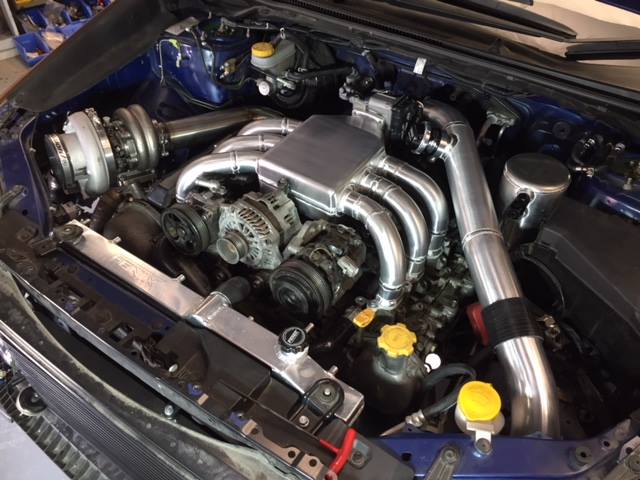
Stock engine + Turbo
Bolting a reasonably sized turbo to the side of an EZ30R provides outstanding bang-for-buck performance gains. For long term reliability, we recommend to keep the power level under 250kw/340HP at the wheels (Approx. 300kw/400HP at the engine). We know of instances where more power has been made, however, there is reasonable risk involved with increasing power levels and boost on an engine with a block, pistons and other components not designed for the purpose.
Built engine + Turbo + Big boost
To turn up the power on an EZ30R, this is the way to go! All of the inherent weak-points of the engine can be improved to handle some serious power. We recommend doing an engine build for anyone wanting long-term reliability on a turbo-charged EZ30R or wanting to push more than 250kw/340HP at the wheels without risk of imminent failure.
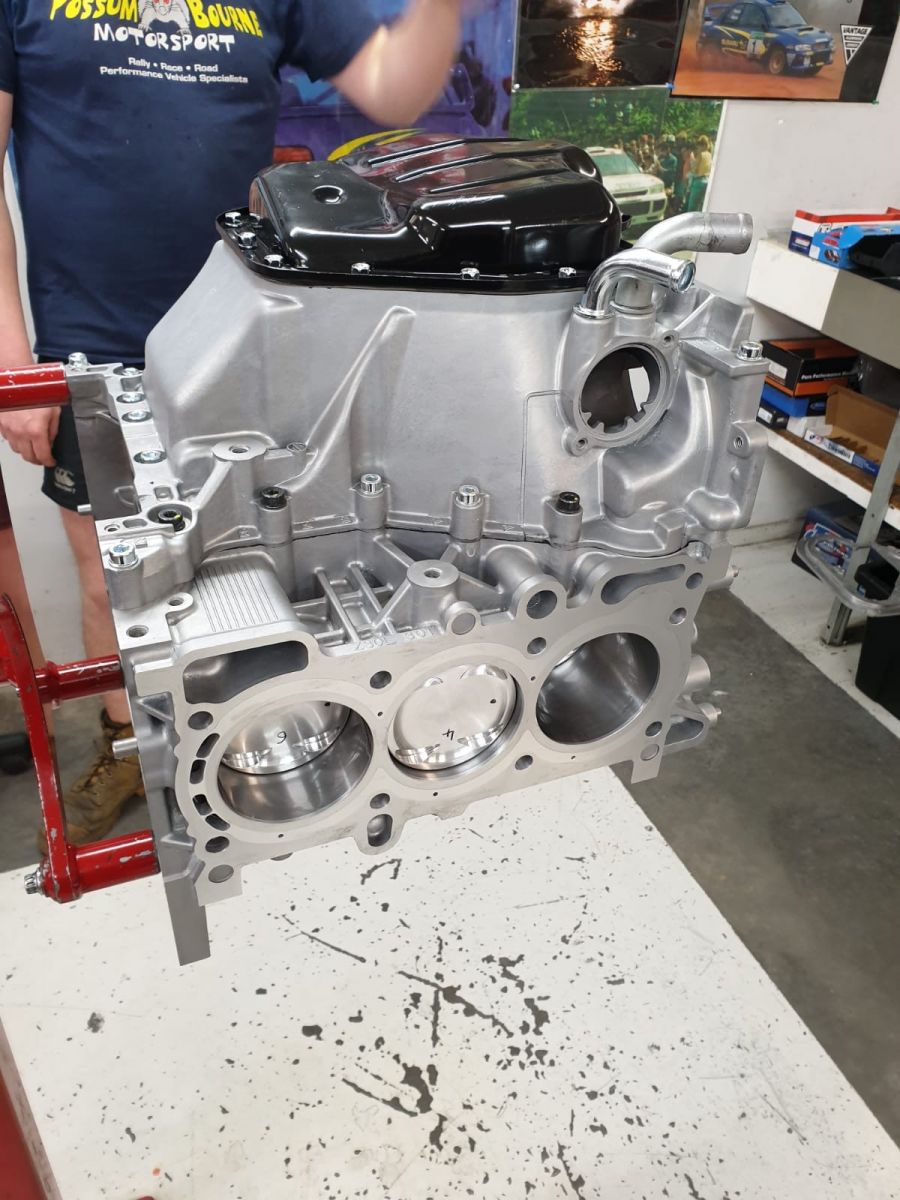
PBMS Recommend the following when building an EZ30R for boost:
- Possum Bourne Motorsport Closed deck H6 conversion - to prevent cylinder flex, blown head gaskets, excessive blow-by and other failures.
- Darton sleeves - these replace the thin factory sleeves (if being used in an application that will likely see multiple rebuilds i.e. motorsport engine or if targeting more than 450kw/600hp.
- Forged pistons - required to handle the high cylinder pressures that will occur with high power. We use and recommend PBMS Custom EZ30R Pistons. When boring and honing all high power engines PBMS recommend the use of a torque plate.
- Con-rods - required to transfer the high levels of torque from the piston to the crankshaft. We use and recommend Pure Performance Motorsport EZ30 con-rods.
- Engine balancing - to ensure a well balanced, smooth and rev-happy engine, balancing of the rotation bottom end components is essential.
- Timing chain tensioner - Preventing the factory tensioner from failing and destroying your new engine is a no brainer. Contact us for the PBMS Improved tensioner.
- Valve springs - As power levels increase, particularly on higher-boost engines, the valve springs can-not withstand the load they are subject to, thus blow open. We use and recommend Kelford valve springs.
- Upgraded valves - The EZ30R has a smaller-than-regular valve stem size, pointing to a possible weak point of the cylinder head. A broken valve typically causes major damage so it is our preference to upgrade these to EZ30R Supertech valves. If the quest for power is calling, we recommend running EZ30R +1mm Supertech valves if targeting over 520kw/700hp at the wheels.
- Cylinder head porting - as power is made in the cylinder head, we always recommend performing a PBMS Stage 2 port and polish as a minimum. To create a truly efficient setup we recommend moving to a PBMS Stage 3 port and polish that focuses on opening up the restrictive and small exhaust ports to a greater degree.
- ARP Head studs - to clamp the heads tightly to the block ensuring the added boost does not disrupt the head gasket seal, EZ30 ARP head studs are a must.
Oiling upgrades
If chasing power and reliability, an engine’s oiling system is always of utmost importance. We recommend the following:
- PBMS EZ30R Baffled sump kit - to prevent oil surge and keep a steady supply of oil around the bottom of the pickup. This is a must for track vehicles or any car that will be pushed hard around corners.
- PBMS EZ30R Oil Gallery Modification - which we have developed to improve oil supply to all bearings, specifically the ‘big-ends’ which are the last in the system to get oil and the first to fail when there isn’t enough.
- Engine oil cooler - to keep the engine oil temperature down. The EZ30R is prone to having cooling issues, it’s a large engine and subject to more heat when it’s turned up. Adding a decent oil cooler is another way to help keep the engine temp under control.
Supercharged EZ30R
Often overlooked in favour of turbocharging, this is a simple and under-rated approach to adding boost to your EZ30R. The major benefit is there are off-the-shelf kits available that can have you boosting down the road in a matter of days. A supercharged EZ30R is limited to the same power and boost levels as turbo’d engine if in stock form.
E85
This biofuel is a great option to help you make more power, have more-efficient power and cool your EZ30R all at the same time. Benefits here are the greatest on a turbo or supercharged engine. The nature of the E85 means that you’ll need to supply the engine with more fuel - bigger fuel pump, injectors, lines and regulator, but more fuel means more liquid in the cylinder leading to more cooling. This cooling effect means the engine can be pushed harder with lower operating temperatures also resulting. If it’s available, we recommend considering E85.
EZ36D
In 2008 Subaru launched what is essentially a revised ‘big-block’ EZ30D in the Subaru Tribeca, then the Legacy and Outback platform. Changes over the modern EZ30D include:
- 3629cc boxer engine
- Bore: 92mm
- Stroke: 91mm
- Rod Length: 125mm
- 10.5: Compression ratio
- Variable cam timing (AVCS) on both intake and exhaust camshaft.
Click here to see an up-to-date list of the EZ30R Engine Products stocked by Possum Bourne Motorsport. For vehicle-specific products such as exhausts and ECUs, please use the vehicle selector to search.
